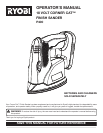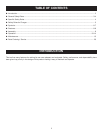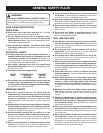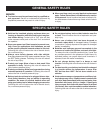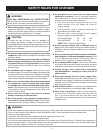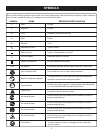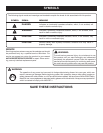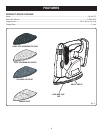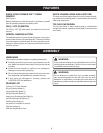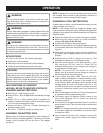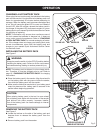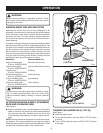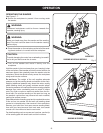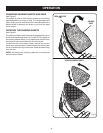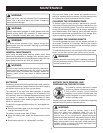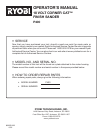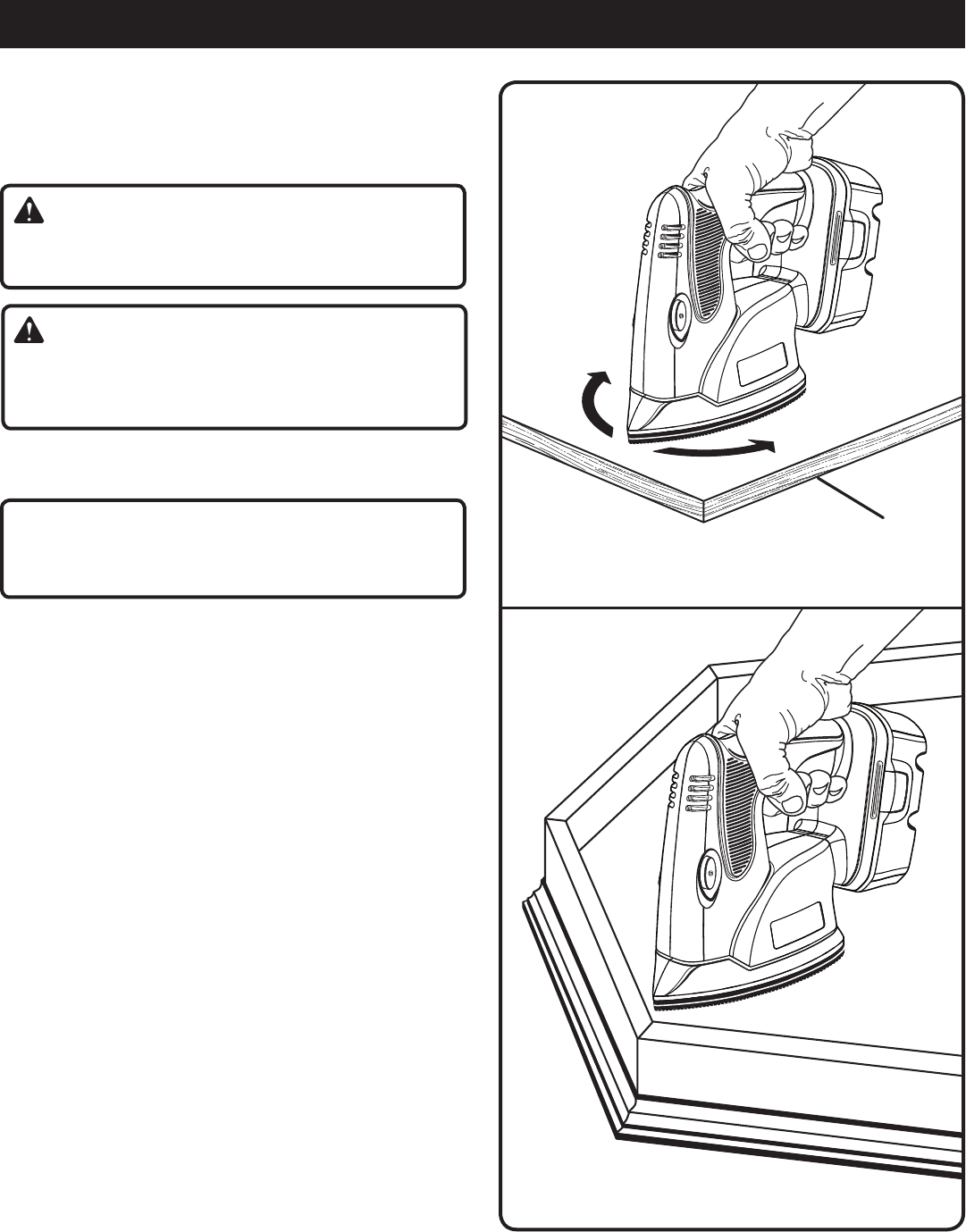
12 13
OPERATION
Fig. 6
WORKPIECE
OPERATING THE SANDER
See Figure 6 - 7.
n Secure the workpiece to prevent it from moving under
the sander.
WARNING:
Unsecured workpieces could be thrown towards the
operator, causing injury.
WARNING:
Keep your head away from the sander and the sanding
area. Your hair could be drawn into the sander causing
serious injury.
n Place the sander on the workpiece so that all of the sand-
ing sheet surface is in contact with the workpiece.
CAUTION:
To avoid damaging the motor from overheating, be careful
not to let your hand cover the air vents.
n Turn on the sander and move it slowly over the
workpiece.
Hold the sander in front and away from you, keeping it clear
of the workpiece. Start sander and let the motor build to its
maximum speed, then gradually lower the sander onto the
workpiece. Move the sander slowly across the workpiece
using small circular motions.
Do not force. The weight of the unit supplies adequate
pressure, so let the sanding sheet and sander do the work.
Applying additional pressure only slows the motor, rapidly
wears sanding sheet and greatly reduces sander speed.
Excessive pressure will overload the motor causing possible
damage from motor overheating and can result in inferior
work. Any finish or resin on wood may soften from the fric-
tional heat. Do not allow sanding on one spot too long, as
the sander’s rapid action may remove too much material,
making the surface uneven.
Extended periods of sanding may tend to overheat the motor.
If this occurs, turn sander off and wait until sanding sheet
comes to a complete stop, then remove it from workpiece.
Remove your hand from vent area, remove sanding sheet,
then with your hand removed from vent area, turn sander
on and run it free without a load to cool motor.
For detail sanding such as corners and crevices, use the tip
of the sanding pad with small back and forth motions.
SANDING IN CIRCULAR MOTIONS
SANDING IN CORNERS
Fig. 7



